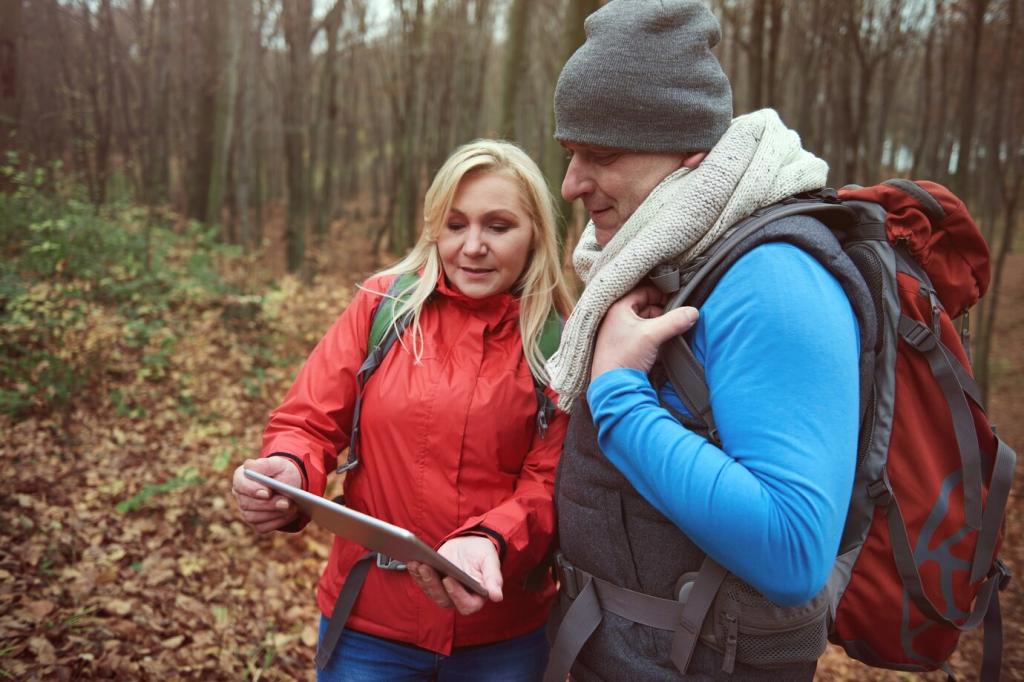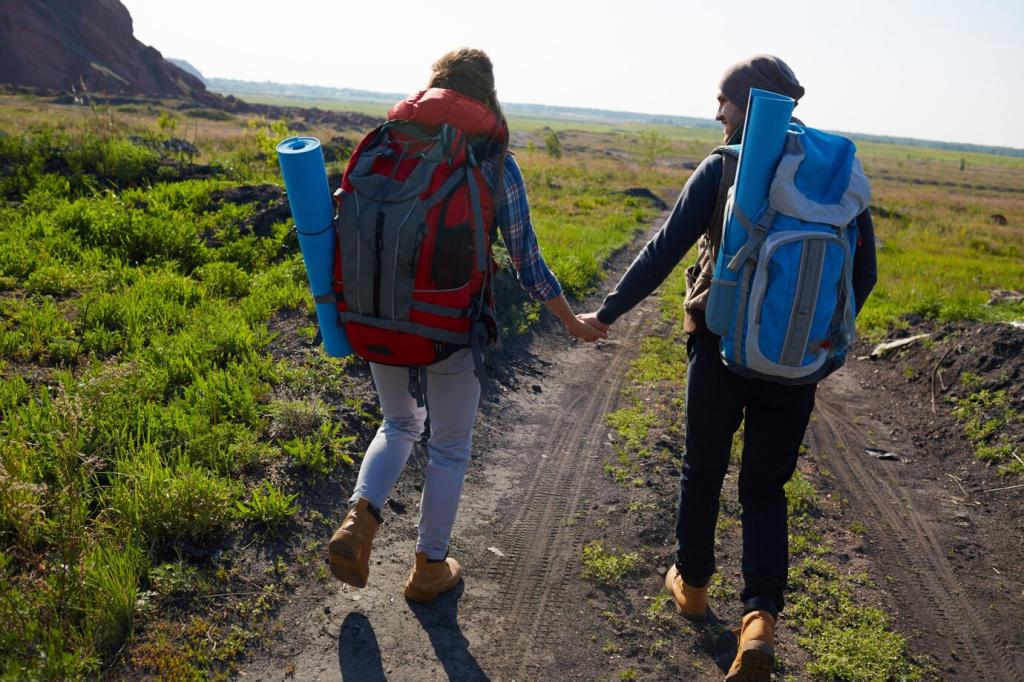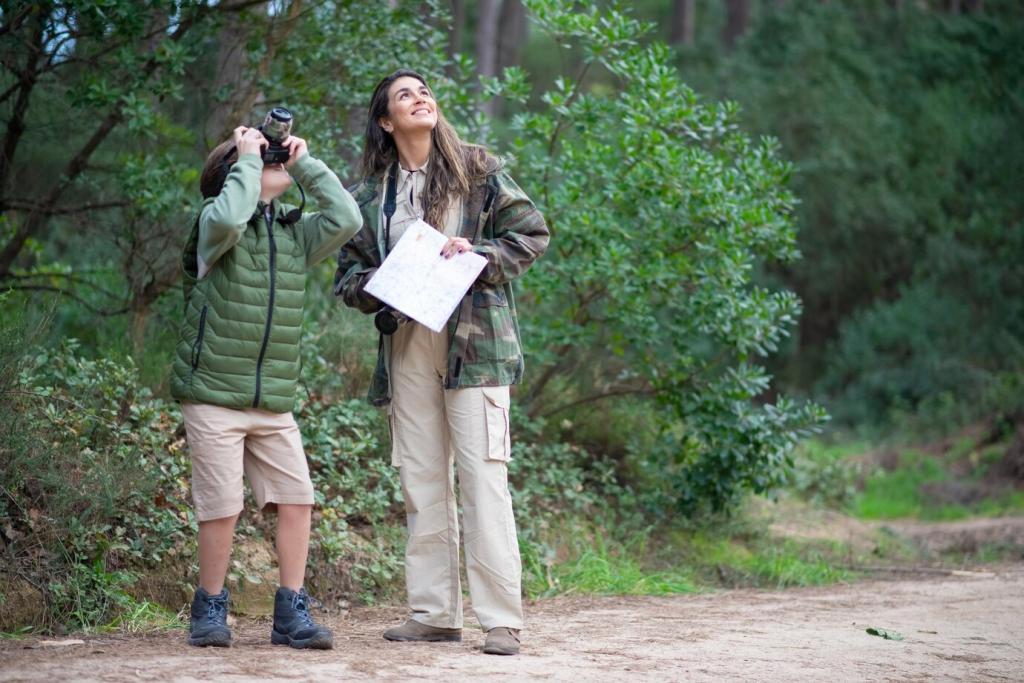
Top Tips for Planning Your First Hike
Chosen theme: Top Tips for Planning Your First Hike. Step into the trail with confidence and curiosity. This friendly guide blends practical know-how with real-world stories to help you plan, prepare, and actually enjoy that very first hike. Subscribe for more beginner-friendly trail wisdom, and share your first-hike goal so we can cheer you on.
Setting a Realistic Trail Goal
Take a short, brisk neighborhood walk with a small daypack and a few stairs included to gauge comfort. Notice your breathing, pace, and how quickly you recover. That honest snapshot helps you choose a trail you’ll actually enjoy.


Setting a Realistic Trail Goal
Two miles on flat gravel feels very different from two miles with steep roots and rocks. Elevation gain dramatically changes effort, especially on uneven surfaces. Start shorter, favor well-graded paths, and let confidence grow naturally.
Essential Gear and Smart Packing
The Ten Essentials Made Simple
Bring navigation (map, app, compass), light (headlamp), sun protection, first aid, knife or multi-tool, fire source, emergency shelter, extra food, extra water, and extra layers. These items transform inconveniences into manageable moments instead of emergencies.
Footwear That Fits
Comfortable, broken-in shoes matter more than fancy labels. Pair them with moisture-wicking socks, trim your nails, and learn simple heel-lock lacing. A tiny hot spot today becomes tomorrow’s blister, so adjust quickly and add tape before it worsens.
Pack Weight and Organization
Keep heavy items close to your spine and mid-back, use small pouches for first aid and snacks, and line your pack with a trash bag for rain. Quick access to layers and water makes every stop efficient and refreshing.
Weather, Seasons, and Timing
Look at hourly wind, precipitation probability, and temperature at elevation, not just in town. Cloud ceilings, radar trends, and recent storm reports matter. If the forecast wobbles, pack an extra layer and a confidence-building rain shell.
Weather, Seasons, and Timing
Begin early to beat heat, crowds, and afternoon storms. Check sunrise, sunset, and how much shaded forest you’ll traverse. Carry a headlamp even for day hikes; it protects your schedule if photo stops stretch longer than expected.


Navigation and Route-Finding Confidence
Maps, Apps, and Backups
Download offline maps, carry a paper topo, and bring a simple compass. Airplane mode preserves battery on trail. Mark the trailhead on your app before leaving service, and practice a quick map check at every major junction.
Trail Signage and Waypoints
Watch for blazes, junction signs, and cairns placed by land managers. Do not build new cairns. Drop waypoints at confusing spots, and snap a photo of the map at the kiosk so you always carry a visual reference.
Knowing When to Turn Back
If the route feels wrong, stop, reassess, and trace your steps to the last confirmed landmark. A beginner friend once turned around at a sketchy creek crossing and returned safely—proof that wise decisions make great future hikes.
Water Planning and Treatment
Aim for small, frequent sips rather than chugging when thirsty. Carry enough from the start or identify reliable sources on your map. A lightweight filter or purification tablets adds flexibility and safety without weighing down your pack.
Snacks That Actually Sustain
Mix quick carbs with slow-burning fats and a little protein: nuts, dried fruit, nut butter, jerky, and sturdy bars. Salty snacks help replace electrolytes. Test foods on regular days to avoid surprises when miles add up.
Pacing, Breaks, and Morale
Adopt a conversational pace and schedule short, purposeful breaks. Use scenic spots to refuel and stretch. A small ritual—like a favorite cookie at the halfway point—keeps spirits high. Tell us your morale-boosting snack in the comments.
Safety, Etiquette, and Leave No Trace
Tell Someone and Plan Check-Ins
Share your route, start time, companions, and return window with a trusted contact. Bring a fully charged phone and a compact battery. In spotty service areas, consider a satellite messenger. Confirm safe return to end the plan responsibly.
Wildlife Awareness and Respect
Give animals generous space, store food securely, and learn local guidance about bears, snakes, or ticks. Keep dogs leashed where required. Quiet observation protects you and the wildlife, turning chance encounters into memorable, respectful moments.
Leave No Trace Basics
Plan ahead, stay on durable surfaces, pack out all trash, and leave what you find. Minimize campfire impacts, respect wildlife, and be considerate of others. Your first hike sets habits—choose the ones that keep trails beautiful.
